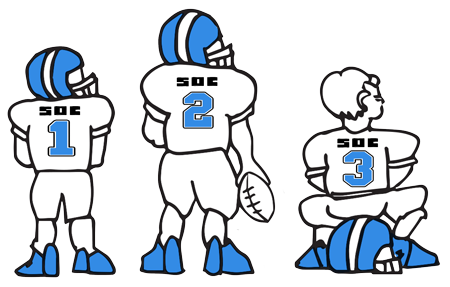ICFiles
SOC 2

Secure File Transfer Soc 2 starts at $1 per month
2010 Tax Update
Tax and Financial News
January, 2011
Get this Article Get this Article & Suite of Tools
2010 Tax Update
![]() There were a number of tax law changes as the following tax legislation was passed:
There were a number of tax law changes as the following tax legislation was passed:
- Hiring Incentives to Restore Employment Act (HIRE Act) on March 18, 2010
- Education/Jobs/Medicaid Assistance Act of 2010 on August 11, 2010
- Small Business Jobs Act on September 27, 2010
- Tax Relief, Unemployment Insurance Reauthorization and Job Creation Act of 2010 on December 17, 2010.
The tax law changes covered a wide variety of areas including tax rates, individual provisions, alternative minimum tax, estate tax, and business incentives.
Individual Tax Rates
Individuals received a two year extension through 2012 of current income tax rates which currently are 10, 15, 28, 33 and 35%. The rates were scheduled to increase after 2010 to 15, 28, 31, 36 and 39.6% which represents a significant tax increase to taxpayers in all brackets.
Individual Provisions
The new law also extends for two years the child tax credit of $1,000, the itemized deduction and personal exemption phase-out, and marriage penalty relief relating to the joint tax rate schedule.
The tax rate on capital gains and dividends will remain subject to a maximum rate of 15% for two years (zero for taxpayers in the 10 and 15% tax brackets). After the extension, the maximum capital gains rate is scheduled to increase to 20% and dividends will be taxed as ordinary income with a maximum rate equal to the ordinary tax bracket which is currently 35% but scheduled to increase to 39.6%.
The alternative minimum tax (AMT) exemption was increased for two years from $33,750 to $47,450 for single taxpayers and from $45,000 to $74,450 for married taxpayers. Also nonrefundable personal credits may offset the AMT liability.
For 2011 only, the employee share of OASDA (social security tax) is reduced from 6.2% to 4.2%.
Estate Tax
The estate tax was reinstated with a maximum tax rate of 35% and $5 Million exclusion for decedents dying after December 31, 2009 and before 2013. For taxpayers that passed away in 2010, an election is permitted to apply the new estate tax provisions which also include a stepped up basis in assets or to have no estate tax apply and receive modified carryover basis for estate assets.
Gift Tax
For 2010 gifts the exclusion amount was $1 Million and the maximum tax rate was 35%. For gifts after 2010, the gift tax is coordinated again with the estate tax. Thus, the maximum rate is 35% and the exclusion is $5 Million. The generation skipping tax rate was -0- for 2010. For gifts after 2010 through 2012, the generation skipping exemption is $5 Million and the tax rate is 35%
Medicare Tax Changes
For years beginning after 2012, an additional .9% tax is imposed on wages in excess of $200,000 for single taxpayers and $250,000 for married couples. In addition, another Medicare tax of 3.8% will be imposed on unearned income in excess of modified adjusted gross income of $200,000 for individuals and $250,000 for married couples.
Extenders
Certain provisions that have been extended on a year by year basis in recent history were either reinstated for 2010 or extended through 2012:
- State and local sales tax deduction
- Teachers classroom expense deduction of $250
- Tax free distribution of $100,000 from IRAs to charity
- Tuition deduction of up to $4,000
- The $500 real property tax deduction was not extended
- The American Opportunity Tax Credit of up to $2,500
Changes Affecting Business
Self Employed Individuals can claim a deduction for health insurance costs for self employment tax calculation purposes in addition to regular tax purposes. This applies to 2010 only.
Bonus Depreciation was increased to 100% for qualified property acquired after September 8, 2010 and before January 1, 2012. Bonus depreciation of 50% applies for 2012. Bonus depreciation has no dollar thresholds or limitations unlike Section 179 Expensing.
Section 179 Expensing of qualified assets purchased from 2010 through 2011 has been increased to $500,000 and the investment limit to $2,000,000. These amounts are set to decrease to $125,000 and $500,000 for 2012.
Additional Incentives
- 100% exclusion from qualified small business stock acquired after September 27, 2010 and before January 1, 2012 and held for five years.
- The research credit was extended through 2011.
- Increase in deductible start up costs to $10,000 for 2010 only
Other Items
Starting in 2011, employers must report the value of an employeeÂÃâs health insurance on their w-2.
Form 1099 reporting is extended to all types of taxpayers, even corporations for payments made in excess of $600 in a calendar year for goods or services beginning in 2012. Payments to a tax exempt corporation are not required. Thus, corporations will no longer be exempt from receiving 1099s.
Increased reporting requirements apply to taxpayers with foreign bank accounts.
Get this Article Get this Article & Suite of Tools
These articles are intended to provide general resources for the tax and accounting needs of small businesses and individuals. Service2Client LLC is the author, but is not engaged in rendering specific legal, accounting, financial or professional advice. Service2Client LLC makes no representation that the recommendations of Service2Client LLC will achieve any result. The NSAD has not reviewed any of the Service2Client LLC content. Readers are encouraged to contact their CPA regarding the topics in these articles.
Dynamic Content Powered by Service2client.com
SEO Content Powered by DynamicPost.net






